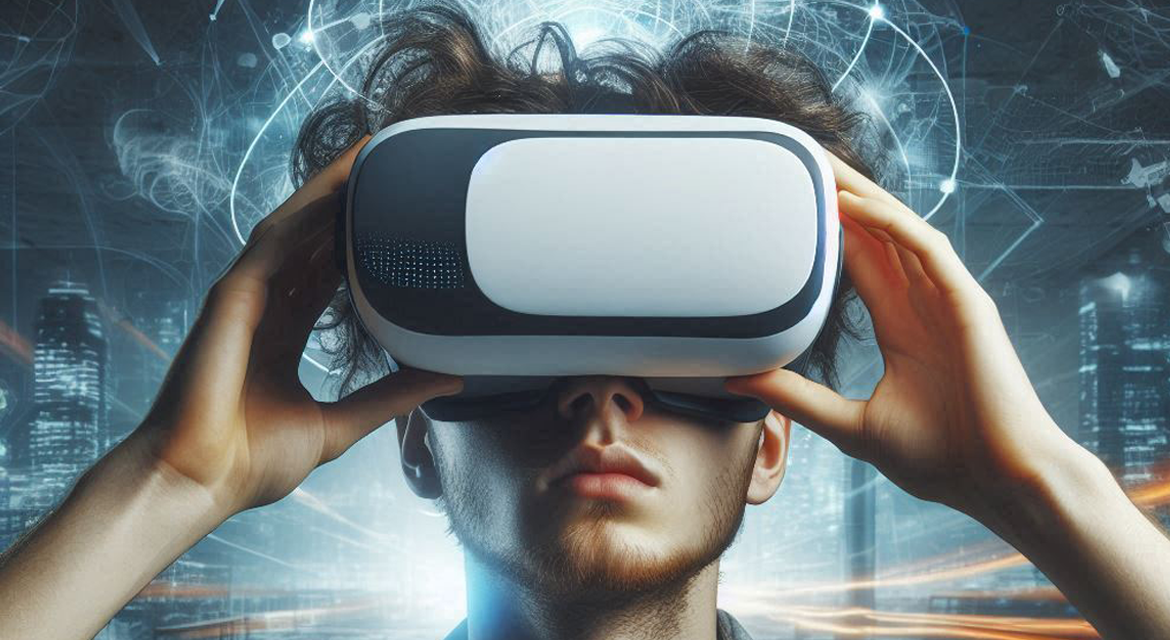Ever found yourself bored with plain ol' reality? Fret not, because Virtual Reality (VR) is here to whisk you away to fantastical realms, thrilling adventures, and mind-bending experiences! Let's dive into the wonderful world of VR – because sometimes, reality just isn't enough.
What is Virtual Reality?
Virtual Reality (VR) is a technology that immerses users in a computer-generated environment, allowing them to interact with a 3D world through headsets, controllers, and even full-body suits. It's like teleporting to another dimension where you can be anything from a superhero to a space explorer, all from the comfort of your living room.
The History of VR
VR may seem like a futuristic concept, but its origins date back to the 1960s. The first VR headset, known as the "Sword of Damocles," was developed by Ivan Sutherland in 1968. Fast forward to the 1990s, and VR began to make waves in the gaming industry with devices like the Sega VR and the Virtual Boy (though their success was, let’s say, questionable). It wasn't until the 2010s that VR truly began to take off, thanks to advancements in technology and the release of modern headsets like the Oculus Rift and the HTC Vive.
How VR is Being Used in Today's Society
VR isn't just for gaming anymore – it's making its mark in various fields:
- Gaming: Of course, VR gaming is still a major draw. From epic space battles to immersive role-playing adventures, VR gaming offers an unparalleled experience that traditional gaming can't match.
- Education: VR is revolutionizing education by providing immersive learning experiences. Imagine studying ancient history by virtually walking through ancient Rome or exploring the human body in 3D detail.
- Healthcare: VR is being used for everything from pain management to surgical training. Patients can use VR for relaxation and distraction during procedures, while medical professionals can practice complex surgeries in a risk-free virtual environment.
- Training and Simulation: VR is used for training in various industries, from aviation to law enforcement. It allows trainees to practice real-world scenarios in a safe and controlled environment.
- Real Estate: VR tours are becoming popular in real estate, allowing potential buyers to explore properties from anywhere in the world without having to physically visit them.
The Future of VR
The future of VR is brighter than a sunlit day in a virtual paradise. Here are some exciting prospects:
- Enhanced Hardware: Expect more advanced VR headsets with higher resolution, wider fields of view, and improved comfort. Imagine VR so realistic, you forget you're even wearing a headset.
- Social VR: Virtual social platforms will allow people to meet, interact, and collaborate in virtual spaces. Virtual reality meetings and social gatherings could become the norm.
- Mixed Reality: The lines between virtual and augmented reality will blur, creating seamless mixed reality experiences. Imagine playing a VR game that interacts with your physical environment.
- Virtual Workspaces: With remote work on the rise, virtual workspaces will enable teams to collaborate and interact in a shared virtual environment, making remote work feel more connected.
Can VR Be Trusted?
VR is generally safe, but like any technology, it has its considerations. Users should be mindful of motion sickness, take breaks to avoid eye strain, and ensure they have a safe physical space to move around in. As for privacy and data security, it's important to use VR devices and applications from reputable companies that prioritize user data protection.
Popular VR Platforms
Several VR platforms are leading the charge in making virtual reality accessible and enjoyable:
- Oculus (Meta Quest): Known for its standalone headsets like the Oculus Quest 2, Oculus offers a wide range of VR experiences without the need for a powerful PC.
- HTC Vive: The Vive provides high-quality VR experiences with precise tracking and a vast library of content.
- PlayStation VR: Sony's PlayStation VR brings immersive gaming experiences to the PlayStation console, making VR accessible to console gamers.
- Valve Index: Valve's high-end VR headset is known for its impressive visuals and immersive experience, making it a favorite among VR enthusiasts.
- Google Cardboard: For those on a budget, Google Cardboard offers an affordable way to experience basic VR using a smartphone and a simple viewer.
Who Benefits from Using VR the Most?
VR benefits a diverse range of individuals and industries:
- Gamers: VR gaming provides an unparalleled level of immersion and excitement.
- Educators and Students: VR enhances learning by providing interactive and engaging educational experiences.
- Healthcare Providers: VR aids in medical training, therapy, and patient care.
- Professionals in Training: VR simulations provide safe and effective training for various industries.
- Real Estate Professionals: VR tours make property viewing convenient and accessible.
Virtual Reality is not just a passing trend – it's a groundbreaking technology that's transforming how we experience the world. From gaming to education, healthcare to real estate, VR is opening up new possibilities and adventures. So, strap on that headset and get ready to explore – because sometimes, reality just isn't enough!













